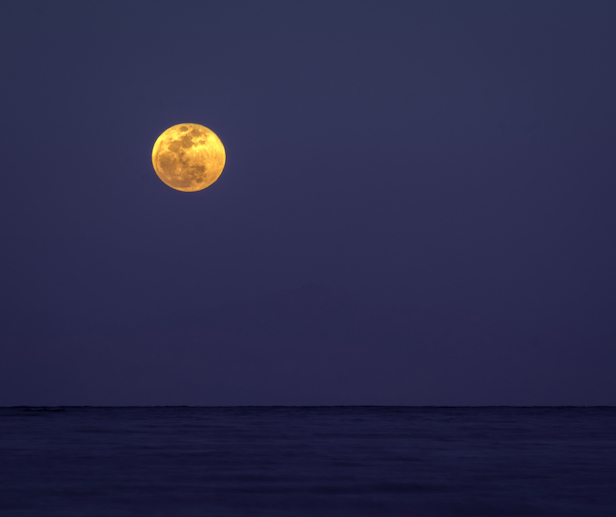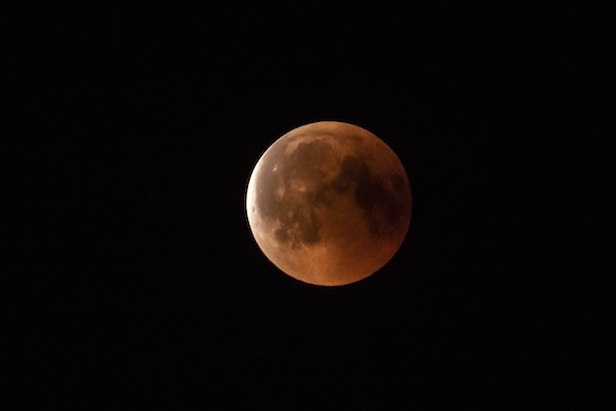NIGHT SKY: Get ready for Monday’s total lunar eclipse!
On 21 January skywatchers across many parts of the world will be able to see a total eclipse of the Moon

A total lunar eclipse occurs when the Earth passes between the Moon and the Sun. Image credit: Ahmed Mosaad
Next Monday morning – on 21 January – skywatchers across the UK, north-western France, north-western Spain, Portugal, a small part of west Africa, North and South America, the eastern Pacific and the north-eastern tip of Russia will be able to see a total eclipse of the Moon. This spectacular event is easy to see and is the last chance for UK observers to see a total lunar eclipse in its entirety until 2029.
A total lunar eclipse occurs when Earth passes exactly between the Sun and the Moon. The Sun is behind Earth, and the Moon moves into Earth’s shadow.
The Moon first darkens slowly as it moves into the penumbra of Earth, the lighter part of the terrestrial shadow. When the Moon is completely within the umbra, the darker part of the shadow, it takes on a red hue that varies in colour.
Sometimes the eclipsed Moon is a deep red colour, almost disappearing from view, and sometimes it can be quite bright. The colour is due to Rayleigh scattering – where the Sun’s blue light is scattered off molecules in Earth’s atmosphere – which also happens at sunsets. The Sun’s red light is scattered much less by air, and is bent by Earth’s atmosphere in a process called refraction, traveling all the way through it to light up the Moon’s surface.
There are different types of lunar eclipse but a total eclipse is the most spectacular and is the only type that causes the Moon to appear red.
Lunar eclipses occur several times a year and take place as often as solar eclipses, if all the different types are considered. Whereas you can only see a total solar eclipse if you are in the narrow path of the Moon’s shadow, lunar eclipses are visible wherever the Moon is above the horizon at the time, so each one can be seen from a large area of Earth. For that reason, they are much more common from any given location.
Lunar eclipses always happen at a full Moon as this is when it moves behind Earth and into line with Earth and the Sun. A full Moon happens every month, but most of the time no eclipse takes place. This is because the plane of the Moon’s orbit around Earth is slightly tilted compared to the plane of Earth’s orbit around the Sun, so the Moon normally passes a little above or below the terrestrial shadow. Eclipses only happen when the Moon, Earth, and Sun are lined up in all three dimensions.
On 21 January 2019 in the UK, the Moon will enter the penumbra at 02:35 GMT and the umbra at 03:33 GMT. The full eclipse (totality) begins at 04:40 GMT, with mid-eclipse at 05:12 GMT – this is the time when the whole Moon will appear red – and it ends at 0543 GMT. The Moon exits the umbra at 0651 GMT and the eclipse comes to an end as it leaves the penumbra at 07:49 GMT.
Lunar eclipses are very easy to witness as no special equipment or safety precautions are required. Solar eclipses are dangerous because observing the Sun directly can damage your eyesight, but the light from a lunar eclipse is much fainter and so is completely safe.
To watch the eclipse on 21 January all you have to do is dress warmly and go outside. If you can see the full Moon you will be able to observe the eclipse as it happens. If you want a close-up view of the Moon as it turns red, a pair of binoculars or a small telescope is helpful. But because lunar eclipses are easy to watch with the unaided eye, you can just go outside and enjoy the view.
Keep up to date with the latest news in space science, astronomy and space exploration in All About Space – available every month for just £4.99. Alternatively you can subscribe and make the most of our 3 for 2 on single issues offer here!






